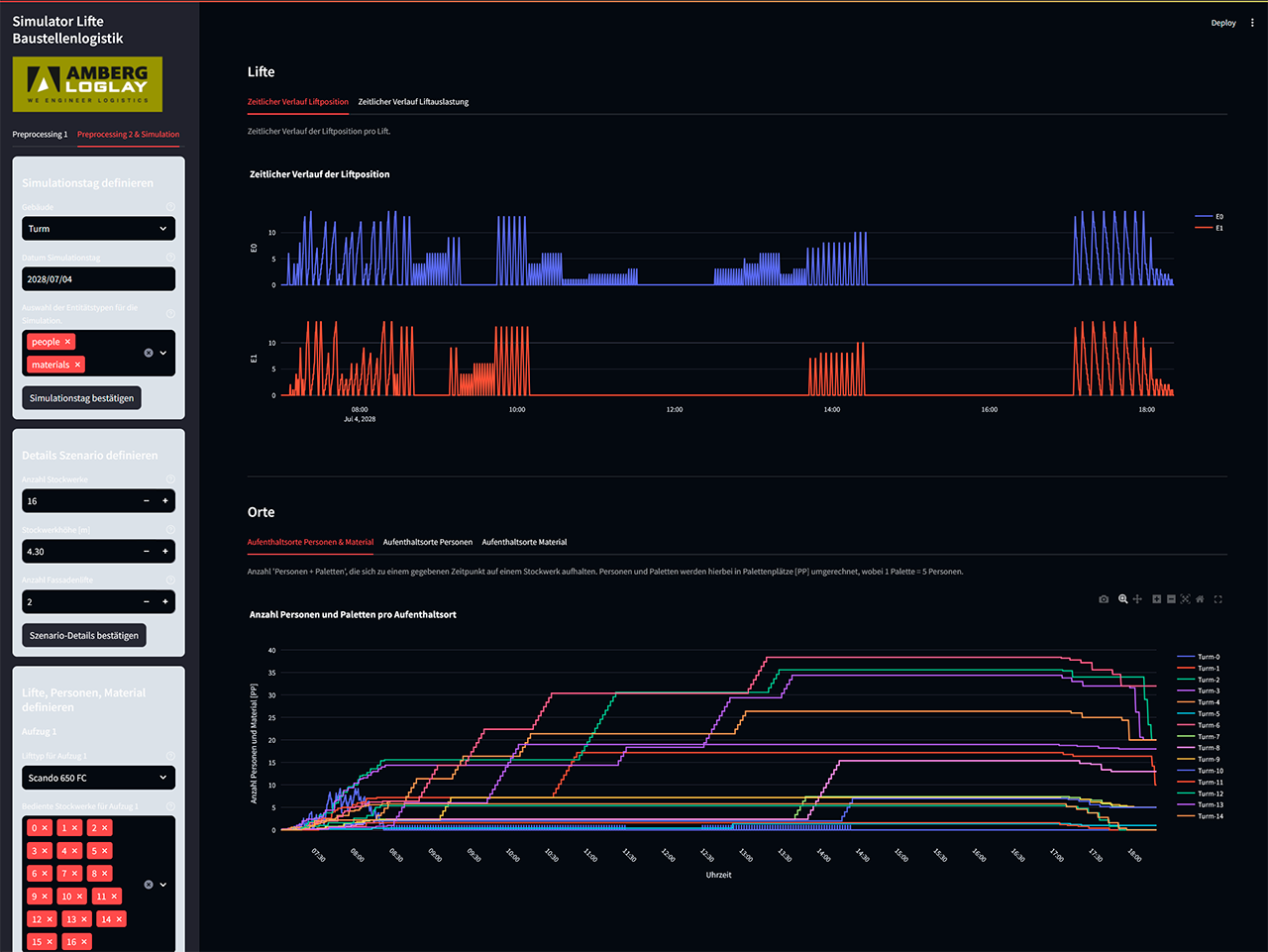How did Amberg Loglay come up with the topic of sensors?
Johannes Römpp: A friendly start-up, which our company founders co-founded, gave us the idea of evaluating the sounds and noises of a construction site. We developed and tested various applications. On the one hand, audio analytics software on the construction site. We wanted to know if you could tell when someone is laying iron, sawing wood, drilling a hole, for example. That worked well. Other use cases include traffic counting and vehicle recognition on construction sites as well as process recognition in tunnel construction. From the application, we recognized the huge potential — we developed our own sensor that is installed in façade elevators and measures how an elevator moves — where does it go, how long does it stop there, are there any technical problems or failures? These sensors are now used on numerous construction sites.
Sensors collect data. What is that good for?
Johannes Römpp: Sensors create transparency on construction sites. The data makes it possible to compare planning with the current situation. If the values differ, the planning can be adjusted to implement more efficient processes. Even for future projects. Take elevators, for example: It is helpful to know whether the lifts will be able to transport people and equipment to the places of use according to the plan. Thanks to the sensors, we know whether our calculations are correct.

“Thanks to the sensors, we know whether our calculations are correct.”
Imagine a large construction site where 700 builders should reach 25 floors in the morning. Logistics planning requires them to travel directly from the ground floor to their floors. In reality, however, there are bosses who first gather their employees on another floor for a meeting and only then let them drive off from there — 30 minutes later, from another floor. Or the example of construction site traffic: In the software, slots are booked for unloading vehicles. Sensors measure how long a vehicle actually stays on the construction site. Under certain circumstances, the slots can be shortened.
Where does the Internet of Things come into play?
Johannes Römpp: As soon as the sensors communicate with the outside world, i.e. the Internet! Each of our sensors is connected to the Internet. This has the advantage that no working time has to be spent reading the data. Sensors also provide data in real time, which also helps. For example, to find out where an elevator is currently located. Or during construction site traffic: This is automatically controlled by sensors. When the sensors detect that a truck is leaving, they turn on the entrance and exit traffic lights and thus regulate the cramped access to the construction site. In this context, access can even be the extended access road to the building perimeter and thus support traffic coordination or traffic service, and even replace it in some projects.
What is your specific approach to developing sensors?
Johannes Römpp: First, we define the requirements and see whether there are already appropriate sensors on the market. If not, we build prototypes ourselves. Together with partners, we develop the sensor from scratch or adapt an existing one. We usually work closely with local partners who specialize in IoT products. For data transmission, we use the LoRa network, which is very energy efficient, so the sensor batteries last up to one year.
What is the most successful sensor project that you have implemented so far?
Johannes Römpp: When expanding the Winterthur district complex, we are supporting traffic management — from and to the construction perimeter but also afterwards. Otherwise, two security personnel would have had to coordinate construction site traffic there for more than two years, but with insufficient workload throughout the working day. Intelligent IoT and camera solutions are therefore the more sensible and cheaper solution.
What challenges do you face when it comes to sensor technology projects?
Johannes Römpp: That every construction site is different. The requirements are individual and the construction site settings are very different.
How common is sensor technology on construction sites today and when will it be standard?
Johannes Römpp: At the moment, we are still on the green field; sensors as we think are hardly used at all. We need to do some convincing and explain why that makes sense. I expect that large construction projects will increasingly rely on sensory solutions over the next five years.



